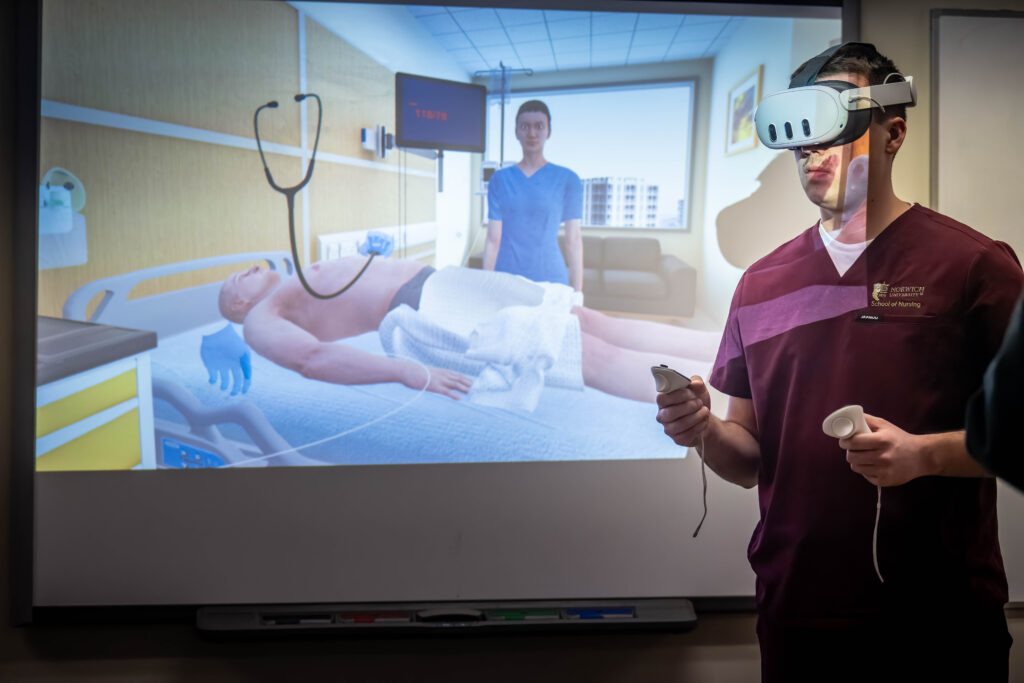How can you scale up simulation by leveraging technology to enhance student learning?
The team at the Norwich University School of Nursing in Northfield, VT did just that for students in both their accelerated and traditional BSN programs.
With a mission towards digital literacy for their students, including the use of iPads for every nursing student, NU’s team sought to further modernize their curriculum while meeting their need for scalability across the nursing program.
The educators in the NU nursing program needed a learning modality that could be run without a facilitator present to navigate the controls of a simulation in real time. Learners needed exposure to clinical situations they wouldn’t see in clinical settings, where they could safely practice their skills autonomously.
Educators needed to achieve all of those marks while providing consistent and regular simulation for their students, giving them all the practice they could need while they prepare for their clinical placements.
Educators at Norwich University chose virtual reality simulation to support their learners, and since implementation, NU has scaled the use of virtual reality, now delivering over 200 more sessions per month than previously for their students.
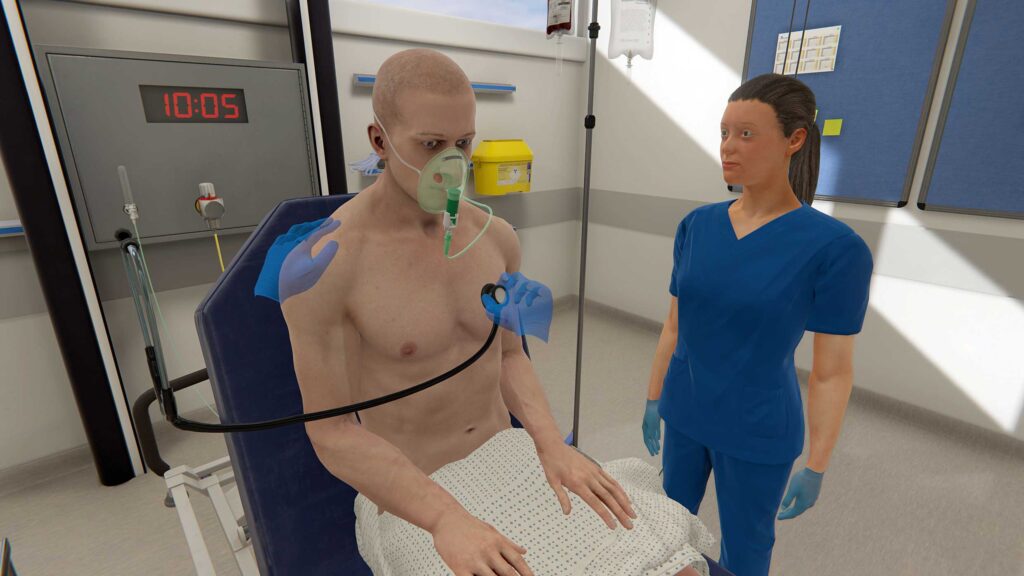
Why educators selected virtual reality for simulation
It was critical for the team at NU to utilize a platform that provided students with an individualized clinical experience, and according to Jennifer Robtoy, Lecturer in the NU nursing program, VR provided exactly that:
“Objectively, virtual reality is an environment where every student has the chance to participate versus a traditional simulation in which there are roles assigned. This allows students to be brave and take risks safely that they may not have otherwise.”
Educators were also interested in scenarios from Oxford Medical Simulation (OMS) for specific clinical situations, like postpartum hemorrhage, that students would be unlikely to see or participate in during their placements.
Learners can work autonomously using OMS, which allows students to independently respond to emergencies and make timely observations around emergent conditions, with it being up to the student to decide when and how to escalate care based on the current situation.
Students are then able to further develop their clinical competency by using the personalized, objective feedback following scenarios and repeating the simulation as much as they need to feel confident in their clinical judgment and technical skills.
Beyond supporting critical thinking, virtual reality was a practical investment for educators at Norwich University.
Because VR has little setup required, simulations can be run with multiple students at once, and the team has reported running these simulations with over 20 students at the same time.
The ability to scale quickly is increasing not just the number of students that benefit from simulation but also the number of simulations in general, and over the last six months, the program has run over 1,100 simulations.
It’s saving educators time, too. Faculty have reported saving valuable time due to the more efficient use of virtual reality simulation. VR sessions have freed up educators to devote more time to projects requiring deep work and in supporting students by leveraging data and insights to improve learning outcomes.
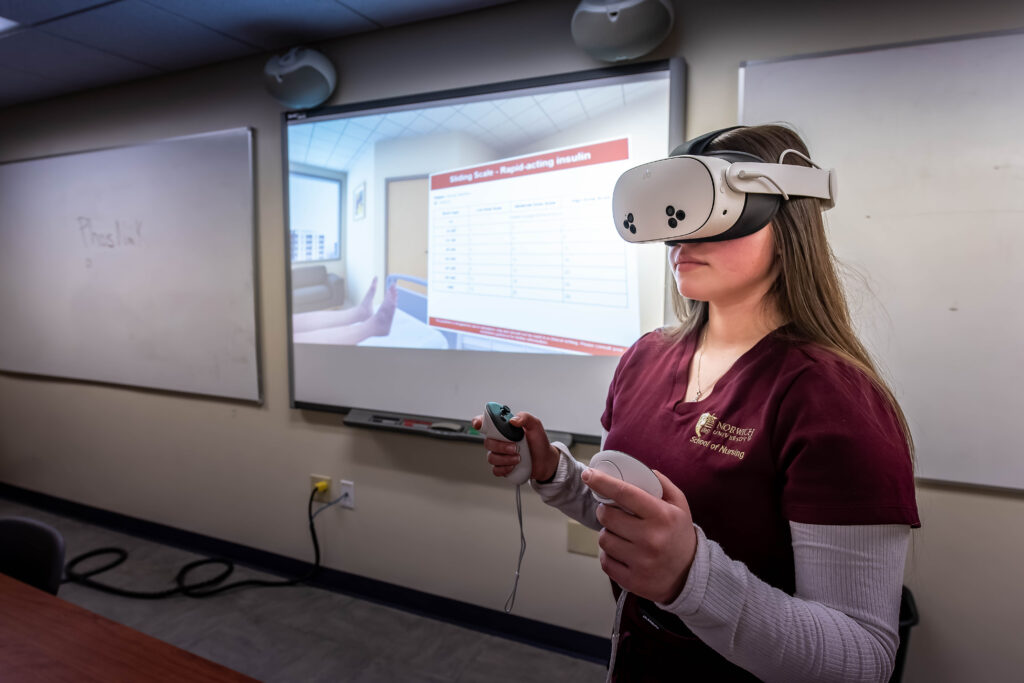
Implementation models
Learners engage with VR simulation in a number of ways in a blended learning approach.
Below are a few of the ways that educators are using VR to enhance learning:
1. Reinforcing key concepts with blended learning
Learners first work in groups in a manikin-based simulation, collaborating to manage a patient case. Then, learners move to individual VR sessions to reinforce the concepts covered during group-based work, supporting autonomous and deliberate practice.
2. In the classroom – applying theory to practice
Supporting didactic work encourages students to begin with the theory and clinical concepts, then apply them in the safety of the virtual environment. This allows for individualized learning, and following a debrief, students then move onto a clinical session to further apply and scaffold their learning.
3. Asynchronous learning
Applying theory in an asynchronous setting is achieved by assigning scenarios to students as part of their independent coursework. Scenarios such as anaphylaxis or ACLS provide students with an opportunity to manage and respond to emergent situations, with individualized feedback to support continued growth and clinical development.
With all these simulation use cases, it’s no surprise to find that the NU team has thoughtfully implemented VR simulation across the curriculum, from novice to advanced learners across a range of courses and concepts.
Identifying the right scenario fit across the curriculum
For many educators, selecting the appropriate scenario for students requires careful thought and consideration. Scenarios must meet certain criteria to ensure students reach the desired learning objectives.
The OMS platform houses over 260 scenarios across specialty areas, supporting the full spectrum of the nursing curriculum.
To identify and map scenarios to specific courses or concepts, the teams at Norwich University and Oxford Medical Simulation worked hand-in-hand to identify opportunities and align scenarios with learning levels and objectives.
To start, faculty sent all syllabi to their OMS Account Manager, who then mapped scenarios aligned with each course’s concepts and learning objectives.
Faculty then met and reviewed the aligned scenarios together during a virtual faculty workshop, walking through the curriculum mapping document course by course for a thorough understanding of best fit and to avoid any redundancies.
One-on-one meetings were also held for any specialized content or individualized work on mapping scenarios to course content.
This process ensured that each educator had visibility into where VR simulations fit into other faculty coursework, with a comprehensive view of VR scenarios for students across accelerated and traditional undergraduate programs.
The curriculum mapping process can be daunting, particularly with access to a library of over 260 scenarios. It’s for this reason that OMS offers a curriculum mapping service in collaboration with educators – OMS experts can walk through the entire library of scenarios, directing educators to key scenarios that align with faculty areas of focus.
This process also ensures that scenarios are individualized to each course, covering key learning objectives and providing specific recommendations for implementation models to further enhance engagement while prioritizing meaningful learning experiences.
Once this process is complete, faculty are able to take the insights from workshops and can use the learnings to scale their use of VR in their own courses and across the nursing program.
Curriculum mapping ultimately serves to provide educators with the resources needed to get the most out of the platform, driving meaningful and impactful learning experiences to help learners become more competent, confident, and practice-ready nurses to improve patient care.
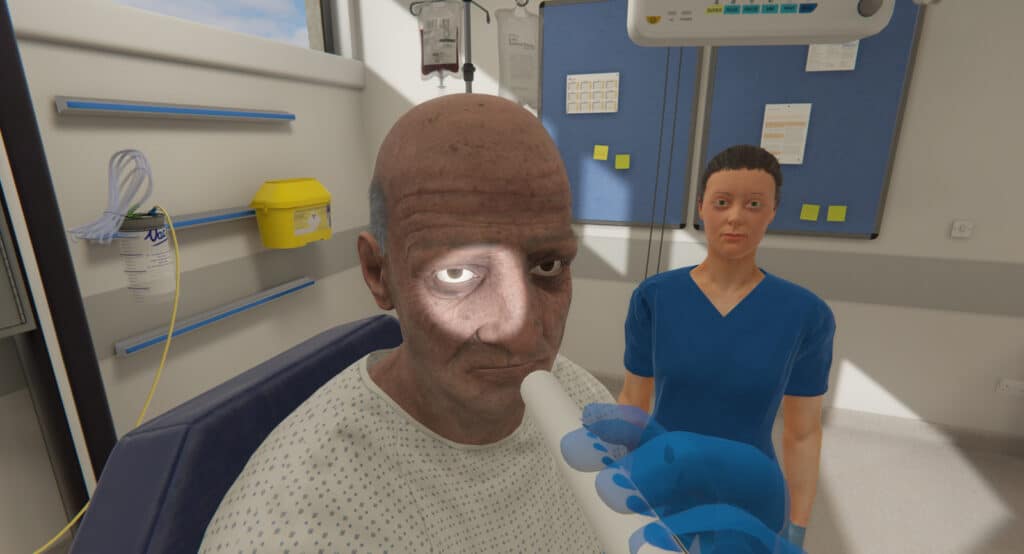
Two use cases of VR in the nursing curriculum
Multi-Patient scenarios
For students in their final year, the focus is often on preparing for the culminating exams and taking the first steps into the transition to practice.
As students progress through the nursing program at NU, they encounter several VR scenarios that combine to scaffold their learning, using a series of simulations from OMS called Multi-Patient scenarios.
This set of simulations begins with one and progresses the learner to manage care for up to five patients.
Each section was carefully mapped to the appropriate learner level by the team at NU, and for their advanced learners getting ready to set off into practice, the final stage of Multi-Patient scenarios focuses on application of skills like prioritization and delegation.
As students begin to shift into autonomous practice, they use these VR simulations to prepare for the responsibilities and daily expectations of a practicing nurse, independently caring for patients and making timely clinical decisions about patient care.
Llynne Kiernan, Associate Professor, said of the choice to use Multi-Patient scenarios, “It’s the best way you can have students take care of four to five patients safely” while remaining in accordance with competency requirements outlined in the AACN Essentials.
Students also report positive outcomes in using these scenarios to prepare for practice. They’ve shared that OMS simulations have challenged their thinking while remaining a psychologically safe learning space for them to practice their skills before beginning their clinical practice.
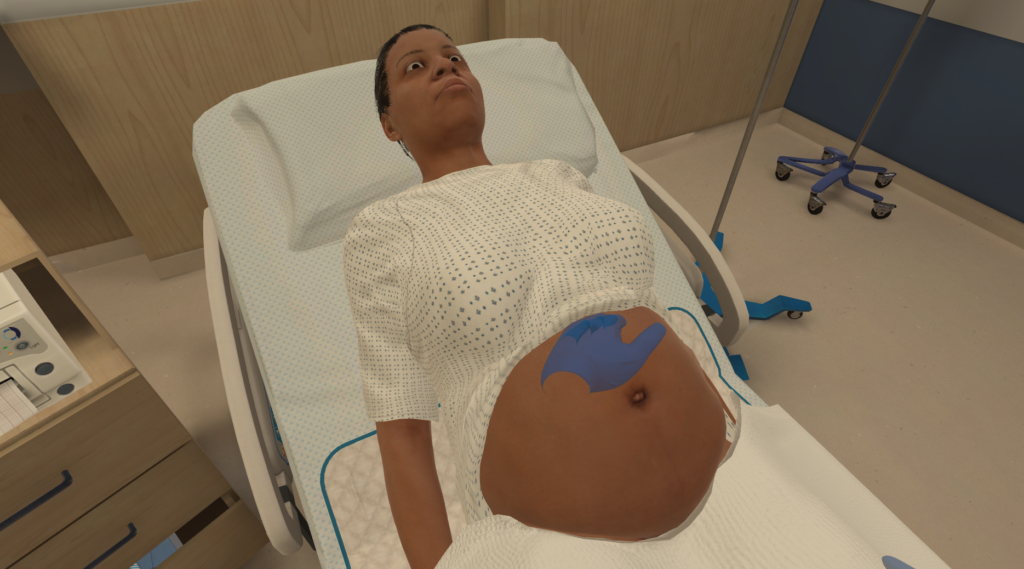
Postpartum hemorrhage
Another key area of focus for leveraging VR simulation is providing students with exposure to clinical situations they aren’t likely to see or participate in during a placement.
As presented by NU faculty at the Northern New England Perinatal Quality Improvement Network (NNEPQIN) conference, the postpartum hemorrhage scenario provides a real time acute situation for students.
This condition is a pressing obstetrics problem, but because of the acuity of the situation, students aren’t likely to be hands-on if it does present during a clinical placement.
Educators at Norwich University utilize VR to prepare students to encounter postpartum hemorrhage in real world practice, bringing clinical concepts to life for students and enhancing their preparedness to handle an emergent situation.
Educators report increased engagement from students when using VR for simulation. Students run the scenario independently and use the individualized feedback following their session to find areas for improvement. They then repeat the scenario to fix any errors or improve their patient care autonomously prior to debriefing with a larger group.
Using VR simulation in this case is not just about exposure to high acuity events. Faculty encourage students to use higher level learning by applying their course content within the context of the scenarios.
Jennifer Robtoy, Lecturer in the NU nursing program, noted that a key goal for use of virtual reality is to foster critical thinking by “encouraging students to use higher level learning by applying the content they’ve learned into the scenarios”.
Students are also encouraged to reflect about their practice independently, using real time feedback as an opportunity to gain insight and enhance their clinical performance with repeated practice.
Robtoy notes that “The feedback of the scenario also serves to give the students real time feedback and an opportunity to perform again with further insight.”
In this way, students are engaged with their learning and are able to practice their skills in a safe environment and, according to faculty, students’ critical thinking has improved when reviewing evaluations at the end of their course.
Key takeaways
The Norwich University nursing program is supporting their students by providing access to digital tools across the curriculum, enhancing engagement and optimizing learning with continued access to simulation for students.
Educators have implemented VR simulation in a number of different ways, to contextualize clinical concepts, provide exposure to specific clinical conditions, and extend the number of opportunities students have to practice their skills.
In working in collaboration with the OMS team, faculty utilized curriculum mapping to ensure comprehensive coverage of learning objectives across the nursing program. This was an integral step for a smooth rollout of VR simulation and an important part of using digital tools to enhance and optimize student learning experiences.
From their initial implementation to today, the faculty at Norwich University have grown their VR simulations to over 200 sessions per month with plans to expand their use of VR even further.
The implementation of OMS virtual reality simulation has driven significant benefits, for both students and faculty. OMS provides students with opportunities to apply theory to practice in a safe environment while saving faculty time and revealing real-time insights.
